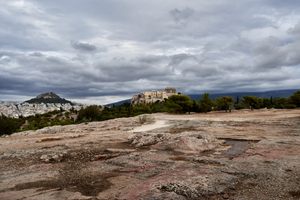
Meton, an ancient Greek astronomer who lived in Athens during the 5th century B.C., is best known for developing the Metonic cycle (although this was also known to the Babylonians).
Also known as the enneadecaeteris, or “19 years” in ancient Greek, the cycle is based on the fact that 235 lunar months are almost equal to 19 solar years. Since 235 equals 19 times 12 plus another seven months, by adding one extra lunar month seven times during a 19-year cycle, a calendar can be created that closely follows both the lunar phases and the solar seasons. Such calendars are called lunisolar.
Examples include the Jewish Calendar, used today predominantly for religious observances, and the Christian Orthodox Church calendar, used to calculate the date of Easter. In contrast, the calendar many people are more familiar with—the Gregorian calendar—is a solar one that follows only the seasons of the year, not the phases of the moon. As such, when we specify, for example, the 15th of January, we immediately know which season it is but have no idea what phase the moon is in that day. A lunisolar calendar, on the other hand, would, within a degree of accuracy, indicate both the season and the lunar phase. The lunar phases were fundamental to ancient Athenians, as they defined the timing of their festivals.
Behind the ancient podium on the Hill of the Pnyx, where Athenians once held their popular assemblies, visitors will find the site where Meton and his assistant Euctemon made their astronomical observations 2,500 years ago. The two astronomers were particularly interested in observing the sunrise at the summer solstice, which enabled them to establish the Metonic cycle. If you are lucky enough to be there on this important day, you’ll notice that the sun rises from the peak of mount Lycabettus. Interestingly, on the shortest day of the year—the winter solstice—the sun rises from the summit of Hymettus. And, at the equinoxes, when day and night are of equal length, it rises from behind the Acropolis.
It seems as if Meton knew exactly where to position his observatory!
